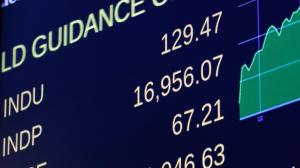Speculative bubbles have plagued economies for centuries; they occur any time prices soar far above the fundamental value of an asset. In the early 1600s, the Dutch pawned their heirlooms and sold their farms to buy contracts for tulip bulbs during an episode remembered as Tulip Mania. Many more followed, including the dot-com craze of the late 1990s and the U.S. housing bubble fueled by flimsy mortgage-backed securities that plunged the world into the worst recession since the Depression.
But economists and neurologists have long debated how and why speculative bubbles get started in the first place. At the root of the disagreement is the question of whether investors act rationally or irrationally during bubbles, and thus whether they constitute an inherent feature of financial markets.
As far back as 1988, researchers have found that bubbles emerge even in laboratory settings, when people trade in experimental markets without any uncertainty. One idea is that people simply get overly excited about rising prices — a phenomenon former Federal Reserve Chairman Alan Greenspan called “irrational exuberance.”
“For whatever reason, if you put a bunch of people together and they start trading, these markets generate bubbles,” said Alec Smith, a neuroeconomist at Caltech in Pasadena and lead author of the new study published Monday in the Proceedings of the National Academy of Sciences.
That’s exactly what Smith, who spent seven years working as a professional stock trader, found in his latest experiment. He and his colleagues set up more than a dozen experimental markets that included about 20 college-age participants who traded for 50 rounds. (While college students are not professional traders, previous studies have found no difference in their behavior, Smith said.)
Each player started with 100 units of risk-free currency and six units of a hypothetical risky asset. There wasn’t much uncertainty in the market: Traders knew the interest rate of the currency, the expected dividends on the risky asset and its fundamental value.
In each market, two or three of the traders conducted their business from the inside of an MRI machine while the researchers watched their brains in action. By tracking the flow of blood to active areas of the brain in need of oxygen, the researchers found that a part of the brain called the nucleus accumbens lighted up during trading.
Set deep behind the eyes, the nucleus accumbens plays a central role in the brain’s reward circuit and helps regulate both motivation and addiction. It floods with dopamine when we get what we want, and it flares during arousal and drug use.
During the experiment, Smith and his colleagues found that activity in this powerful and not particularly rational part of the brain closely tracked rising stock prices. The more nucleus accumbens activity the scientists registered in the traders’ brains, the higher the prices rose.
Neural activity even predicted the imminence of a crash — when blood flow soared, prices reached perilous highs before tumbling back to the asset’s fundamental value.

However, not all traders showed the same brain patterns. One astute group — people who tended to sell earlier than the rest and thus earned the most during the experiments — showed activity in another part of the brain as the bubbles grew.
The anterior insula usually alerts people to physical discomfort, like a racing heartbeat or a feeling of fullness. But it has also been shown to respond to risk. In the small group of high-earning traders, the anterior insula sounded alarm bells that caused them to shed their risky assets before others.
But for most traders, the hedonistic nucleus accumbens dominated the cautious anterior insula, creating stock market bubbles.
“The cumulative evidence from these papers and others is that emotions matter for financial behavior, and can in fact drive stock prices,” said Camelia Kuhnen, an economist at the University of North Carolina in Chapel Hill who was not involved in the study.
The study does not prove that irrational behavior rules the markets, Smith acknowledged. Activity in the nucleus accumbens could coincidentally track trading for other reasons, although the brain region’s involvement in addiction, overeating and gambling make that unlikely, he said.
If anything, the study suggests successful traders should lean on their emotional misgivings a little more. Smith takes this as empirical evidence for this famous maxim from investor extraordinaire Warren Buffett: “Be fearful when others are greedy, and greedy when others are fearful.”
Author: Julia Rosen
Source: http://www.latimes.com/science/sciencenow/la-sci-sn-irrational-markets-20140710-story.html




